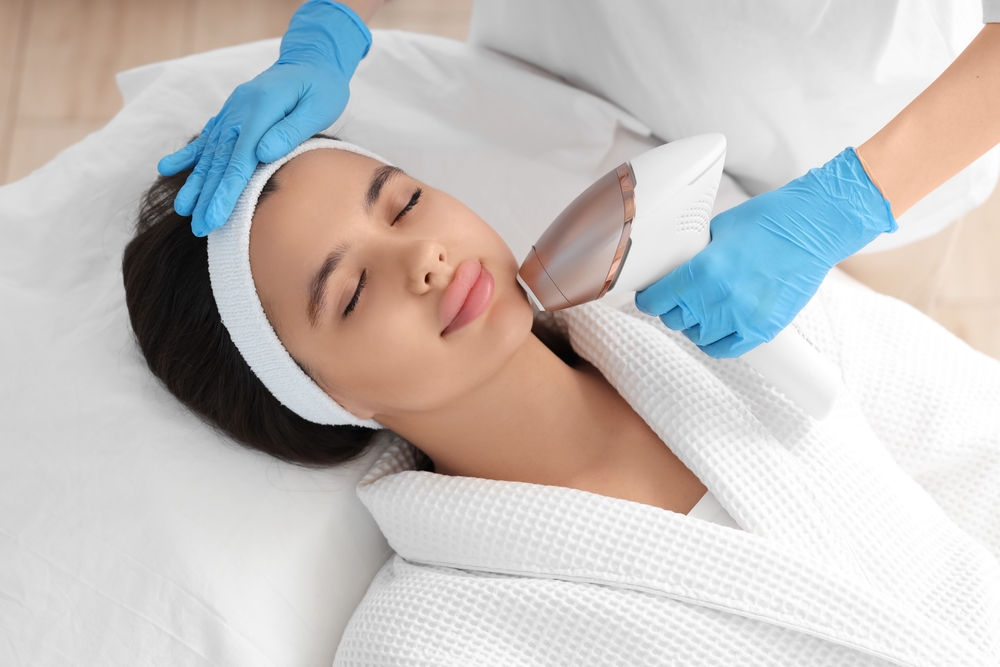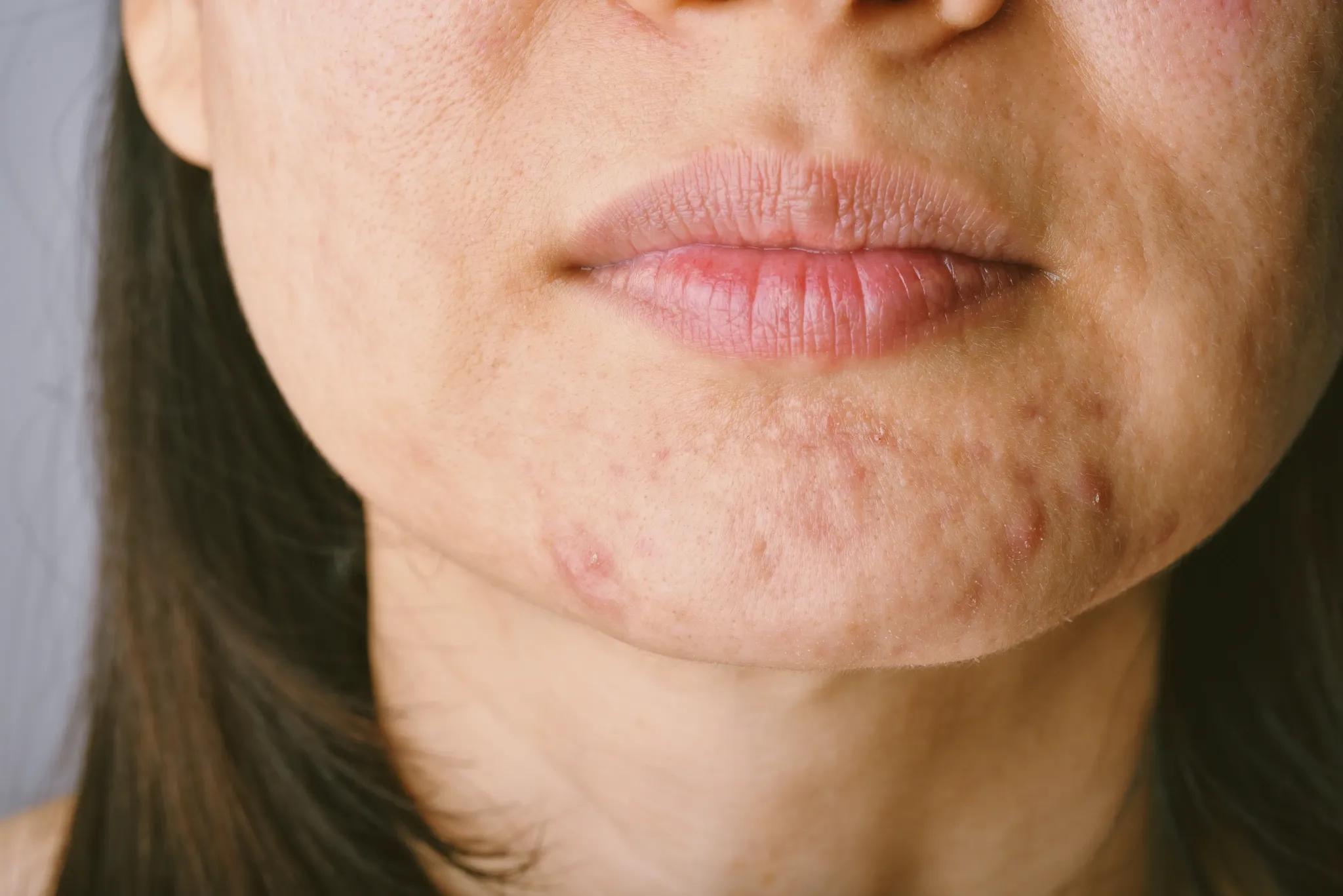
Everything You Need to Know About IPL Laser Treatment
In the evolving world of advanced skincare, IPL laser treatment has become one of the most sought-after solutions for those looking to improve skin clarity,
Our unique approach enables us to look beneath the surface of the skin and simulate your results prior to treatment. Learn more >
Results simulator now available. Learn more >

Explore the transformation potential of PDO threading, one of the most sought-after cosmetic treatments for non-surgical facial rejuvenation. With PDO threads before and after results showing remarkable improvements, this treatment promises firmer, lifted skin with natural results that last.
PDO threads, or polydioxanone threads, are absorbable sutures that have been safely used in surgical procedures for decades. Recently, they’ve become popular in aesthetic treatments, particularly for skin lifting and firming.
These threads stimulate collagen production, leaving behind a supportive scaffold of new collagen fibres as they gradually dissolve. This process provides a natural lifting effect, improving skin volume and firmness for a more youthful appearance.
When pdo threads are inserted, they create micro-injuries in the skin, triggering the body’s natural healing response. This response leads to collagen production, which supports the skin’s structure.
The threads dissolve within six months, leaving behind new collagen fibres that keep the skin looking firm and lifted for 12–24 months.
PDO threads come in several varieties, each crafted to target specific skin concerns and deliver unique benefits. Understanding the different types of PDO threads can help you and your practitioner decide which option is best suited to your aesthetic goals.
Mono threads are smooth, single threads without barbs. They are inserted in a mesh-like pattern to create a subtle but effective scaffold under the skin. This network of threads promotes collagen production, improving skin texture and adding a slight lift.
Mono threads are ideal for clients seeking to improve skin firmness and elasticity without significant lifting. They are often used in areas needing added volume, such as the cheeks, forehead, and under-eye regions.
Screw threads, also known as twisted or coiled threads, provide additional volume to the skin. These threads are shaped in a spiral form, which increases their surface area and, consequently, their collagen-stimulating effect.
Screw threads are suitable for areas that require plumpness and definition, such as hollow or sunken areas on the face. They offer subtle lifting, ideal for areas needing enhanced volume, including the nasolabial folds and cheeks.
Cog threads are barbed PDO threads designed to latch onto the skin’s deeper layers, offering a more pronounced lifting effect. These threads are commonly used in pdo thread lift treatments for areas like the jawline, neck, and cheeks.
As the barbs hook into the skin, they create a firm, supportive structure that lifts sagging tissue, providing contour and a more youthful appearance. Cog threads are especially popular for individuals seeking noticeable lifting and reshaping.
PDO threading offers a range of benefits, making it a top choice for those seeking non-surgical skin rejuvenation:
PDO threading is suitable for many people, but it’s not for everyone. Understanding whether this treatment is appropriate depends on your unique skin concerns and aesthetic goals.
Individuals who typically benefit from pdo threading are those looking to:
While PDO threading is safe, certain individuals should avoid it. People with the following conditions should consider other treatments:
Proper preparation is essential to ensure a successful pdo thread lift experience and to maximise the results. Taking the right steps beforehand can help minimise any potential side effects and make the procedure as comfortable and effective as possible.
A thorough consultation with a qualified practitioner is crucial before your treatment. During this session, the practitioner will evaluate your skin’s condition and discuss your personal goals to determine if pdo threading is the right choice for you.
You’ll also discuss any health concerns, medical history, and current medications. This information is essential as it helps the practitioner customise a treatment plan tailored to your specific needs.
This is a great opportunity to ask questions about the procedure, recovery, and expected results.
To prepare for your PDO thread treatment, you’ll need to arrive with a clean face, free of makeup, sunscreen, and skincare products. Avoiding blood-thinning medications, such as aspirin, and supplements like vitamin E or fish oil, in the days leading up to your appointment can reduce the likelihood of bruising.
Your practitioner may also recommend refraining from alcohol, as it can increase sensitivity and the risk of bruising. Following these guidelines will help ensure a smooth treatment experience and optimise your results.
Here’s what you can expect during the pdo threading procedure:
To begin, a topical numbing cream is applied to ensure your comfort throughout the procedure. This cream minimises any potential discomfort from the thread insertion.
In certain cases, local anaesthesia may also be administered to specific areas, especially for individuals who are more sensitive. The practitioner will discuss your preferences and any concerns during your initial consultation to tailor the numbing process to your needs.
Once the area is numbed, the practitioner uses fine needles or cannulas to carefully insert the pdo threads beneath the skin’s surface. The type of thread chosen—such as mono, cog, or screw threads—and the insertion technique will depend on the specific areas being treated and the results you wish to achieve.
These threads provide support and gently lift the skin, stimulating collagen production as they settle.
The entire procedure generally takes between 30 minutes to an hour, depending on the areas treated and the number of threads required.
Once the threads are in place, they are gently lifted, providing an immediate improvement in skin tightness and contour. This instant lift is just the beginning, as results will continue to improve over the following weeks.
One of the most exciting aspects of PDO threading is the transformation. PDO threads before and after comparisons reveal a striking difference, especially in areas that tend to show age-related sagging.
Right after the procedure, you may notice an immediate lift due to the threads’ placement. This initial effect is caused by the threads physically lifting the skin.
Over the next few weeks, your skin will continue to improve as collagen builds around the threads. This gradual improvement means you’ll see the best results a few months after treatment, and the effects can last up to two years.
While the threads dissolve within six months, the collagen framework they leave behind provides ongoing support, keeping the skin firm for up to 24 months. For those who want to maintain results, follow-up sessions every 12–18 months are recommended.
Aftercare is essential to achieving the best outcome. Following these guidelines will help you make the most of your PDO threading treatment:
It’s common to experience mild swelling, bruising, or tenderness after the procedure. These side effects are temporary and usually resolve within a week. Over-the-counter pain relievers can help manage any discomfort.
Your practitioner may recommend follow-up sessions depending on your skin’s response. For those wanting to maintain the results, scheduling maintenance appointments every year can help you keep the lifted and youthful look.
One of the greatest advantages of PDO threading is its versatility, as it can be effectively used on various parts of the body. Each area targeted with PDO threads offers unique benefits, making it a popular choice for non-surgical lifting and tightening.
The face is the most common treatment area for PDO threading, where face threading can improve contours and restore youthful volume. PDO threads can be placed around the cheeks to lift sagging skin, define the jawline, and even lift the eyebrows for a refreshed appearance.
This gentle lift helps smooth fine lines and improve the overall facial structure, providing natural-looking results.
PDO threading is also effective for firming and tightening the neck and chest areas. As the skin on these areas is prone to fine lines and creasing, PDO threads can minimise these signs of ageing. The threads stimulate collagen production, leading to smoother, firmer skin over time.
Beyond the face and neck, PDO threads can improve skin laxity on various other body parts, such as the arms, thighs, and knees.
For those looking to address multiple areas with a single treatment, PDO threading offers a comprehensive solution, improving skin tone and texture across the body for a youthful appearance.
Here are some common questions people ask about PDO threading:
As with any cosmetic procedure, PDO threading has potential risks, including minor bruising, swelling, and temporary discomfort. However, when performed by a qualified professional, these risks are minimal.
Most clients see desired results after one session. For those looking to improve or maintain their results, periodic follow-up sessions can be beneficial.
PDO threading pairs well with other treatments, such as fillers or skin resurfacing, for a more comprehensive rejuvenation plan. Your practitioner can help you decide on the best combination for your goals.
PDO threading offers an effective and safe way to lift and rejuvenate the skin without surgery. With its ability to stimulate collagen production and provide natural, long-lasting results, it’s an excellent option for those looking to enhance their appearance.
By following proper aftercare, you can enjoy the benefits of pdo threading for months or even years to come.
Discover the transformative effects of pdo threads before and after. Book your consultation today and explore how a PDO thread lift can enhance your appearance, offering a refreshed and youthful look at Bondi Junction Cosmetic Clinic.

In the evolving world of advanced skincare, IPL laser treatment has become one of the most sought-after solutions for those looking to improve skin clarity,

Forehead wrinkles are among the first visible signs of ageing and often appear earlier than expected. These lines result from repeated facial expressions, environmental exposure,

Struggling with chin breakouts that just won’t disappear? You’re not alone. Acne in this area tends to be stubborn and persistent, often showing up as
"*" indicates required fields
Excellent, we are always excited to meet a new face or to welcome back a familiar one. Contact us in the way that best works for you!
© 2022 Bondi Junction Cosmetic Clinic. All rights reserved.
Enter your details and we will contact you within 24 hrs.
"*" indicates required fields